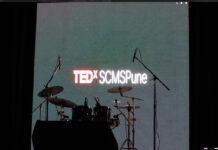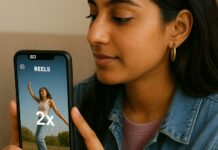In recent years, the pervasive use of smartphones has not only transformed our lifestyle but has also sparked discussions about its impact on our physical health. One such topic gaining traction is the phenomenon dubbed “iPhone finger”.
This term has captured public attention and stirred debates about whether prolonged smartphone usage is altering the appearance and health of our hands. This phenomenon was brought into the spotlight during a segment of The TJ Show, shared on TikTok, which has led to a variety of reactions from the public and experts alike.
The Emergence of “iPhone Finger”
The concept of “iPhone finger” was highlighted by one of the hosts on The TJ Show, where it was explained how the weight of a smartphone often rests on the pinky finger during use. This constant pressure can lead to a visible indentation, potentially altering the finger’s appearance.
Viewers were encouraged to examine their own pinkies, resulting in many discovering similar indents and sparking widespread curiosity and concern.
https://www.instagram.com/tjpodcast/reel/C4x3xZMu3kN/
The TikTok video garnered over six million views, leading to a flurry of comments. Some viewers found humour in the term, while others questioned its validity.
Comments ranged from, “Why iPhone finger and not just phone finger?” to more humorous takes like, “I got Samsung finger… thank God I don’t have iPhone finger.” However, not everyone was convinced, with some noting that their finger indents existed well before the advent of smartphones.
Public Reaction and Debate
The public response to the concept of “iPhone finger” was mixed, with many taking to social media to share their thoughts. While some users found the term amusing and relatable, others were sceptical.
One user humorously noted, “Both my pinkies had a bend in them well before iPhones,” while another remarked, “This is junk science, every one of my fingers has an ‘indent’ in the same spot”.
The phenomenon was also compared to other repetitive strain injuries, such as a writer’s callus. According to Healthline, a writer’s callus forms from repeated friction against the finger, suggesting that similar repetitive actions with smartphones could lead to noticeable physical changes in the hands.
Also Read: Australians Are Walking Barefoot On Roads But Why?
Expert Opinions on “iPhone Finger”
Experts have weighed in on the debate, offering insights into the legitimacy of the “iPhone finger”. Occupational therapist Andrew Bracken spoke to Fox13, acknowledging that while finger indents from smartphone use are real, “iPhone finger” is not a recognized medical condition.
Bracken explained, “You’re using your pinky to stabilize and support your smartphone, and you literally indent the side of your pinky from holding your phone”.
Despite this, Bracken warned of the potential consequences of prolonged smartphone use, such as Cubital tunnel syndrome and carpal tunnel syndrome. He emphasised that these conditions could lead to numbness in the pinky finger and along the side of the hand, which if left unaddressed, might result in serious health issues.
Excessive smartphone use, according to experts, can contribute to various health problems. Dr. Peter Evans, an orthopaedic surgeon with Cleveland Clinic, highlighted the possibility that what some think is “smartphone pinky” might be an underlying condition.
Evans noted, “Constant cellphone use can cause a range of joint problems. While some claims of injury might be overstated, others are real and involve serious, long-term damage”.
Evans also mentioned conditions like clinodactyly, a genetic finger malformation, and Dupuytren’s contracture, which are unrelated to smartphone use but might be mistaken for it. These insights underscore the importance of distinguishing between smartphone-induced issues and pre-existing conditions, promoting the need for awareness and proper diagnosis.
Coping Mechanisms and Recommendations
In light of concerns over the “iPhone finger,” both experts and commentators have suggested various coping mechanisms. Using accessories like PopSockets can help alleviate pressure on the pinky finger, distributing the weight of the smartphone more evenly across the hand. Additionally, reducing overall screen time is recommended to prevent strain and potential long-term damage.
Ergonomic awareness is crucial in mitigating the effects of prolonged smartphone use. Adjusting how we hold our devices, taking frequent breaks, and incorporating hand exercises can all contribute to better hand health. These proactive measures can help prevent the development of more serious conditions and maintain overall well-being in our increasingly digital lives.
The phenomenon of the “iPhone finger” highlights a growing concern about the physical impact of our digital habits. While not officially recognized as a medical condition, the visible indents on our pinkies from smartphone use reflect broader issues related to repetitive strain and improper ergonomic practices.
Public reaction has been mixed, with some finding humour and others questioning the validity of the concept. Expert opinions emphasise the need for moderation, proper device handling, and awareness of potential health risks. As we continue to integrate technology into our daily lives, it is essential to remain mindful of its physical implications and take steps to protect our health.
Image Credits: Google Images
Feature image designed by Saudamini Seth
Sources: Firstpost, NDTV, India Today
Find the blogger: Katyayani Joshi
This post is tagged under: iphone, iphone finger, deformed, pinky finger, experts, phone use, smartphone usage, physical impact, Popsockets, orthopaedic, diagnosis, pre-existing conditions
Disclaimer: We do not hold any right, or copyright over any of the images used, these have been taken from Google. In case of credits or removal, the owner may kindly mail us.
Other Recommendations:
Spending Time Online Might Not Be Harmful As Perceived, Latest Research Says




































